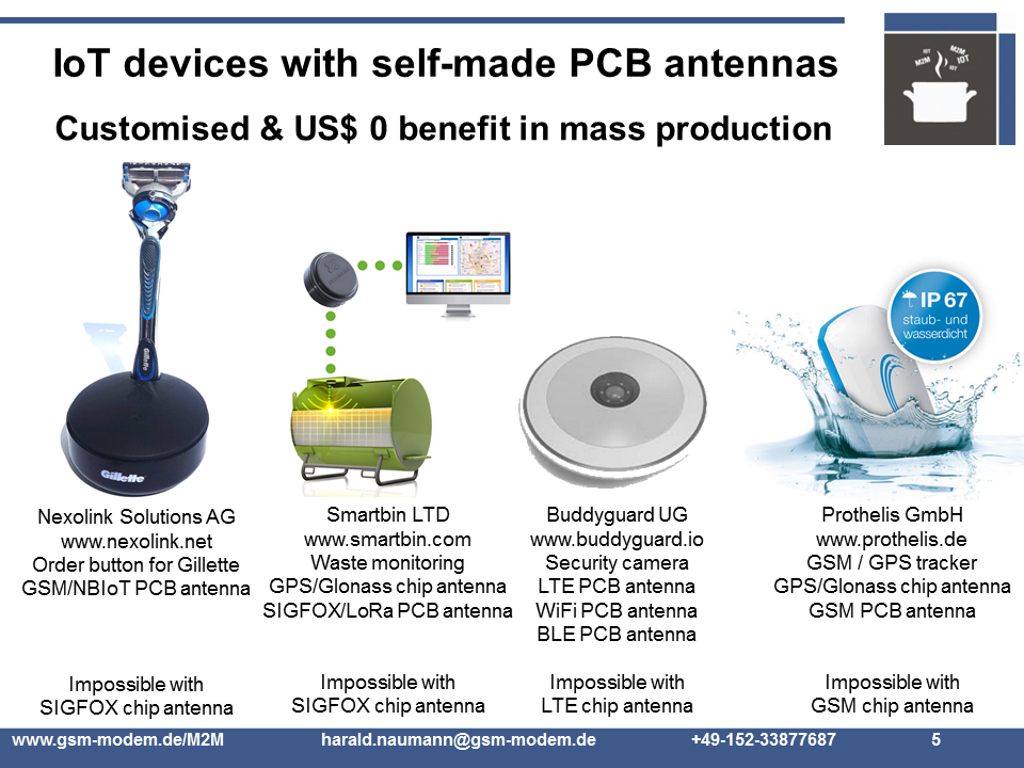
IoT devices with customised antennas
1. IoT buttons
In my region, two IoT buttons caused a buzz and landed in the basket of end customers. One is the Amazon Dash button and the other one is the Gillette order button called Gillette Club Station. LoRaWAN and SIGFOX had no chance as carriers because of the lack of deep indoor coverage in Europe.
2. Smart bins
If you are looking for the volume deployment of smart bins you will find them at SmartBin Ltd in Ireland. Their bin supports SIGFOX, LoRaWAN and cellular. My akorIoT team developed the SIGFOX, LoRaWAN and cellular antennas for them. If you try to run the bin sensor in my region, then you will need to use a cellular link such as GSM, because SIGFOX or LoRaWAN offer no nationwide coverage.
3. Smart cameras
If you plan to develop a LTE camera like Buddyguard then again you end up with cellular. SIGFOX and LoRaWAN will not gaain any market share in this segment even if they ever offer a deep indoor coverage.
4. Tracking
The GSM / GPS tracker of Prothekis could support LoRaWAN or SIGFOX, but they offer a Europian wide tracking service including service centres. LoRaWAN or SIGFOX does not offer deep indoor coverage all over Europe.
What do these four IoT applications have in common?
All of them are on a wireless link. All of the bought a copy of my IoT / M2M Cookbook before starting their development, got advice and end up in mass production with a succesful design. All applications used a customised PCB antenna to save costs and/or to get a proper wireless connection. For several reasons a standard chip antenna did not meet the technical specification. By the way, I started to write my first IoT / M2M Cookbook in 2010. In 2010 SIGFOX and LoRaWAN did not exist, but cellular was available. Cellular is still available and the new kids in town gained nearly zero market share because they offer no European or Continent-wide coverage.
Lessons learned:
For several reasons, the four applications above follow the cellular approaches. The new wireless technologies did not meet the requirements of the customers. The lack of a network is one reason but missing acknowledgement messages for order confirmation is one of the other reasons.
If you plan your own IoT device then select the wireless technology wisely. If you have no wireless specialist in your team, then it is highly recommended to hire an independent consultant with at least 15 years experience in wireless to compare the wireless options available both today and the past.
Has this short article piqued your interest? Do you have a wireless IoT idea? Do you plan an IoT device with embedded antennas? Do you have an IoT prototype and have a need to optimise the design or minimise the price? If you have answered YES to any one of these questions, then please do not hesitate to drop an email to harald.naumann (at) gsm-modem.de and to ask for a proposal or some engineering services to make your IoT idea a cost-effective reality.